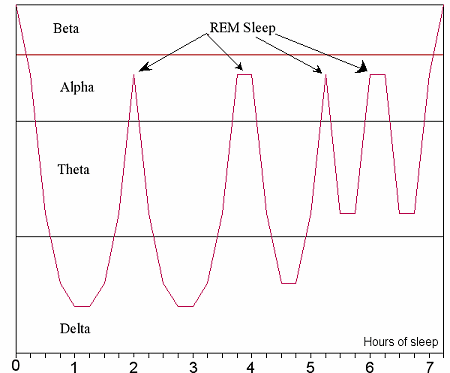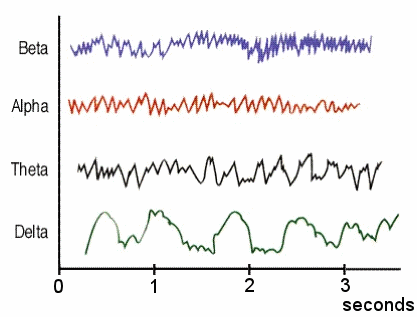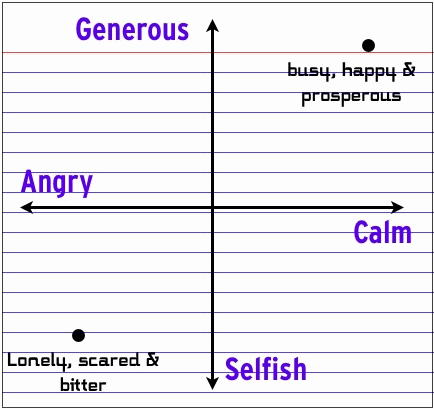IntMath Newsletter - Math exam preparation, periodic functions in the body
By Murray Bourne, 23 Mar 2009
23 Mar 2009
In this Newsletter:
1. IntMath is on Twitter!
2. IntMath Poll Results - Math Exam Preparation
3. Math Tip - Study habits
4. Math Tip - Periodic functions and the body
5. From the Math Blog
6. Final Thought - Lonely, scared, bitter
Reader Lemmie wrote after the last IntMath Newsletter:
Thank you very much for the Math. I am like a child in a candy shop!
You're welcome, Lemmie!
1. Follow the Daily Math Tweet on Twitter
Get a regular dose of math via the free Daily Math Tweet via Twitter. There will be math information in bite-sized chunks, jokes, very short stories and tips.
You can either "Follow" through Twitter or subscribe using the feed.
The link: IntMath on Twitter.
2. IntMath Poll Results - Math Exam Preparation
The IntMath Poll of Mar 2009 asked readers what they do on the night before a math exam.
The proportion of students who study till very late and those who go to be early was very similar at about 1/3. A surprisingly high number don't do any study the night before (22%) and very few like to get up with the birds to study (13%) .
Poll Results:
33% Study till very late
32% Study then go to bed early
22% Don’t do any study
13% Go to bed and get up early to study
Number who voted: 1500
This is not a "scientific" poll and we cannot draw too many conclusions. But if the above is typical of all math students, then it is no wonder many students perform so badly at math.
Over half of the students who responded to this poll are doing it all wrong!
3. Math Tip - Study habits
I write often about study habits because this is a lifestyle choice that you can change easily.
I also mention sleep quite often because I actually suffer regularly from a lack of sleep. If I've had a sleepless night, I find it hard to drag out of bed and be enthusiastic about what I need to do. I don't function well and I certainly don't solve problems (especially math problems) very well. I just struggle through the day and can't wait to get home and go to bed.
In my case, I do all the right things to ensure a good night's sleep, but it's not always successful due to physical reasons.
Now, everyone knows that teenagers have strange sleep patterns. They come alive at 10:00 PM and work on their homework until 1:00 AM or so. They go off to bed and have difficulty getting up, and are sleepy all day — especially during that math test. These are the 33% who answered "Study till very late" in the IntMath Poll.
Your circadian rhythm determines your sleep/wake cycle. It is affected by the amount of melatonin produced by your pineal gland (the concentration is low during the day and high at night) and your core body temperature (you are coolest around 5:00 AM).
Cells in the eyes detect darkness in the evenings and trigger the release of melatonin. Trouble is, in teenagers, this biological clock does not quite work as it should. When they should be getting sleepy at 10:00 PM, they are wide awake.
A key variable here is light. Our bodies evolved when there was no light at night (except the moon or campfires). In modern cities, light pollution is a big problem. Our eyes are telling us it is still evening. When we have computers and TVs on at night it is another thing that messes with the natural sleep rhythms.
Amount of sleep: Did you realize that teenagers should get between 8.5 and 9.5 hours of sleep per night? Most adolescents don't get anything like this and suffer from sleep deprivation - it's no wonder they don't want to get up the next morning.
Sleep and learning: Deprive someone of sleep and they have a whole lot of trouble learning anything and you can forget problem solving. In fact, we will die due to lack of sleep (after around 14 days) before we die due to lack of food (around 40 days).
Sleep is essential for learning and for problem solving.
Those 32% who answered in the IntMath Poll that they do some study then go to bed early are the most likely to perform best in the math exam the next day. Their brains have a better chance to process what they have learned, and they are more likely to have insights (the "a-ha" moments) the next day — either on their way to the exam or while actually doing it.
Early risers: To round out this discussion, I'll briefly talk about the 13% who go to bed and get up early to study. That's better than those doing an "all-nighter", but such people miss out on the benefits of their brain processing what they have read during the night. Sure, a quick read over the notes before going in is worth it, but not if it's the first time you've seen that topic.
Zero study: And as for the 22% who do no study at all... This is fine if you constantly get 100% in your math tests, but I suspect your score is usually less than that. If you don't need to go to school on the day before the exam and you've studied all day, then it is fine to relax and go to bed early. If not, you should read over your summaries and try some examples, then go to bed early.
Making good lifestyle choices is one of the easiest ways to improve your math score and reduce your math anxiety.
So to bring your sleep patterns into alignment with what your body desires, you could try:
- Turn off lights, TV and computer early
- Make a regular time to retire (10:00 PM is when your body is naturally telling you to go to bed)
- When possible, sleep in a cool room to keep your core temperature down
4. Math Tip - Periodic functions and the body
While researching the above article, I saw the following graph which shows someone's breathing pattern (and heart rate) during sleep.

"THO" in the graph stands for "thoracic breathing" (the regular up and down motion of the abdomen).
This is a periodic graph. That is, it has a pattern that repeats itself at regular intervals and in this case, it reminded me of a sine curve.
We can see that the subject took a breath about every 3.75 seconds. This is the period.
In general, for the curve y = sin bt, the period is 2π/b. (See Period of a sine graph).
In our case, 2π/b = 3.75 which gives b = 1.676.
So the THO graph could be modeled as: y = sin 1.676t. Here it is:
![]()
Notice that the heartbeat is also periodic (it has to be or we are in serious trouble!) and this person's heart is beating at about 70 beats per minute.
Brain waves are also periodic in nature.
Let's talk about brain waves as we move through the process of going to sleep.
When we are doing math homework (or a math test), Gamma waves race through our brains at a rate of 36+ Hz. This is evidenced when we are conducting high-level information processing.
Beta waves occur at 15-35 Hz and this is when we are awake and active. You are aware of what is going on around you.
Alpha waves occur when we are relaxed with our eyes closed. Their frequency is from 8 to 12 Hz.
Theta waves have a frequency of 5-8 Hz and we display these when we are in light sleep and we can be woken easily.
Delta waves have a frequency of 1 to 4 every second (Hz). Our brains experience these waves during deep sleep when we aren't dreaming. We also have these waves if we are in a trance or unconscious.
After we have been asleep for about 90 minutes, we move into the first phase of Rapid Eye Moevement (REM) sleep. In this phase our brains exhibit Alpha waves which have frequency 9-14 Hz and these are the ones we show during REM Sleep.
The following graphic shows that we have 4 or 5 episodes of REM sleep during the night, with more occurring close to the time we will get up.

This graphic shows an EEG (electroencephalogram) of 4 of the brain's waves.

These are not actually periodic, since the pattern is fairly erratic, but the frequencies of these waves are quite standard.
Other periodic events in our bodies include:
- Peristalsis (the wave motion that pushes food through our intestines)
- The tiny hairs in our ear vibrate when we hear sounds, in a range of 10 Hz to 20 kHz
- When we shiver, our muscles contract and relax in a rhythmic motion to increase our body temperature
- Women's monthly reproductive cycle
You may also enjoy this page on Biorhythm graphs.
5. From the math Blog
1) KenKen - a new Sudoku rival
KenKen is a puzzle from Japan that the New York Times is now publishing daily.
2) Kindle math
The Kindle and other electronic readers promise a green alternative to newsprint.
But how green are they really?
3) Pi Day today (3/14) - Buffon's Needle
Today is Pi Day and to mark the day, we take a look at Buffon's Needle, which is a technique for finding the value of pi that involves needles and probability.
4) The coming EcoBounty
A new report from Trendwatching.com opens up many opportunities for job-seekers and for schools who prepare them.
6. Final thought - Lonely, scared, bitter
Here's a set of axes with a great message.

[Source: Seth Godin.]
Until next time — I hope you enjoy a good night's sleep!
See the 16 Comments below.
